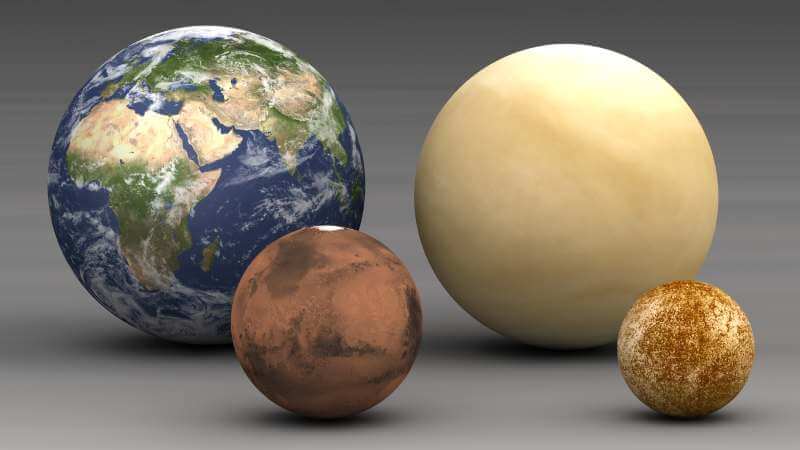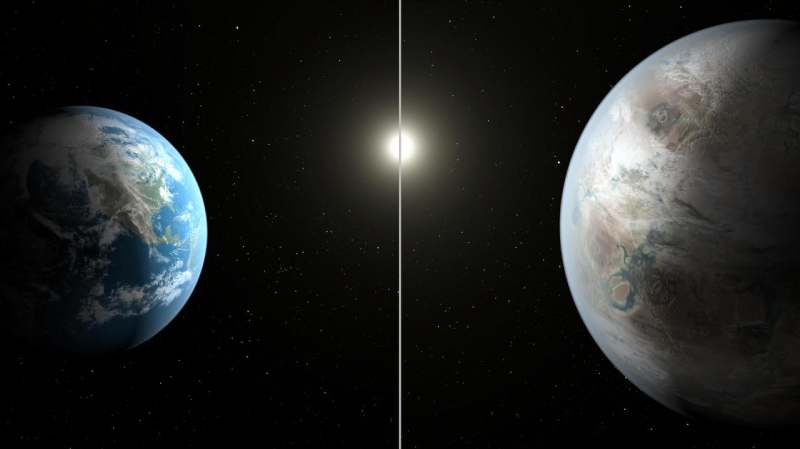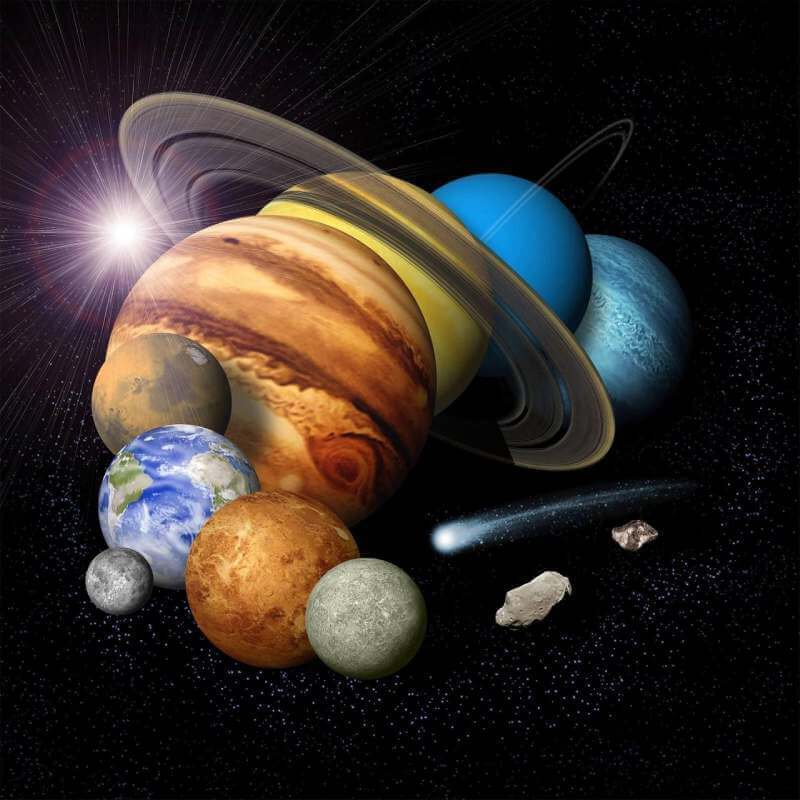Gas giants like Jupiter — mostly composed of helium and hydrogen, although they have a solid core — currently seem to outnumber rocky planets on a universe-wide scale. These planets lack a solid surface, and although some scientists and sci-fi authors have explored the exciting possibility that life may emerge even on gas giants, humanity will never call them home.
Rocky planets, whether roughly Earth-sized or much larger “Super-Earths,” are a different story. As our solar system already shows, not all rocky planets are suitable for human life, but some may be.
Which planets have a rocky surface? Here’s a fascinating look for you — whether you’re curious about where future space exploration may one day take us or just want to learn about our own solar system.
A Look At The Rocky Planets in Our Solar System
Our solar system is home to eight planets (since poor Pluto was demoted to “dwarf planet” and many more tiny planet-like celestial bodies, including dwarf planets, asteroids, and comets, were discovered). They are Mercury, Venus, Earth, Mars, Jupiter, Saturn, Uranus, and Neptune.
The first four planets are referred to as the “inner solar system,” and that’s where all the rocky planets hang out. The asteroid belt separates the inner solar system from the outer solar system, home to gas giants.

Let’s take a closer look at the rocky planets of the inner solar system:
- Mercury is the first planet from the sun. It mostly has a rocky surface composed of silicate rocks, and its barren landscape is dominated by deep craters from previous impacts with celestial objects. Mercury’s proximity to the sun has made it impossible for this planet to maintain a significant atmosphere.
- Venus is encompassed in a thick and hostile atmosphere that makes it hard to imagine life could ever exist there. The planet is covered in basaltic rocks, and its intense volcanic and seismic activity has given birth to impressive mountains.
- Earth is, of course, the planet we call home. It’s mostly covered in silicate rock, and 70 percent of its surface is water. Our Earth is the only planet known to sustain life — so far.
- Mars has a complex surface and a thin atmosphere that isn’t suitable for human life. It may once have had water, and even oceans, on the surface, and (potentially ice-based) water deposits may still be hidden in its depths. Mars is our next planetary destination.
Everything beyond Mars is asteroids, gas giants, and icy dwarf planets. However, we do have another unmissable celestial body nearby — the Moon. Its cratered surface mostly consists of fine dust, and one size is forever turned away from the Earth in a tidal lock.
Beyond Planets: Exploring Promising Moons
Looking beyond our planet-centric view of the solar system (except for the Earth’s moon, of course), our cosmic backyard features numerous other planet-sized objects. The gas giants’ satellites (moons) may harbor the potential for life, or indeed life itself.
Some of the most fascinating satellites in our solar system include:
- Europa is one of Jupiter’s largest moons. A covered ocean of liquid water may lie beyond its icy surface (yes, Europa has water). Many scientists believe that Europa has the biggest potential for extraterrestrial life in our solar system, and future space missions aim to explore this exciting possibility.
- Io is a highly-volatile moon of Jupiter with over 400 active volcanoes.
- Ganymede is another of Jupiter’s moons, with a rocky core and an icy mantle.
- Callisto also belongs to Jupiter. This moon is covered in a mix of ice and rocks, and the moon is geologically calm and predictable.
- Titan, Saturn’s largest moon, features rivers, seas, and oceans. They’re not made of water though — methane and ethane rule the roost in this hostile environment. Although fascinating, people will never call this moon home.
- Enceladus is another of Saturn’s moons, famous for its impressive geysers. Scientists believe that bacterial life may exist on this moon.
What About Rocky Planets In Other Solar Systems?
One day, we may garner the willpower, develop the technology, and amass the funding to leave our solar system behind and venture into the depths of space. When we do, humanity will probably first explore rocky planets that may be habitable.
Curiosity piqued? Good! Here’s a look at the most interesting candidates:
- Proxima Centauri B is the second planet orbiting Proxima Centauri, the closest star to Earth apart from the sun. This rocky planet is just over four lightyears away, and we may one day reach it. Because it is in the “Goldilocks Zone,” Proxima Centauri B might have liquid water. However, we don’t know anything about its atmosphere yet.
- TRAPPIST-1e orbits a cool dwarf star known as TRAPPIST-1, about 39 lightyears from Earth. This star has several rocky planets, but TRAPPIST-1e has drawn attention because it lies within the habitable zone. While we don’t know much about this planet, scientists continuously scan it for signs of life.
- Kepler-452b, also dubbed “Earth 2.0,” is beyond our reach with current technology. Approximately 1,400 lightyears away, it orbits a star that closely resembles our sun and lies within the Goldilocks Zone. With new technology, future humans would be incredibly excited to explore this rocky planet!

If you’re reading this, you’re alive right now. You probably won’t live to discover whether Kepler-452b already harbors life, but you may learn more about Proxima Centauri B in your lifetime.
Conclusion
Our solar system is home to four rocky planets. In order, starting with the planet closest to the sun are Mercury, Venus, Earth, and Mars. Our own planet will forever be the “third rock from the sun,” but we may land on Mars sometime in the next decade or so. The Red Planet is most likely to sustain a human colony in the future.
The moons of the gas giants also have habitable potential, even if that doesn’t apply to us. Beyond that, our closest target is Proxima Centauri B. At just over four lightyears away, science fiction authors are already dreaming about its potential. One day, scientists may join them.

